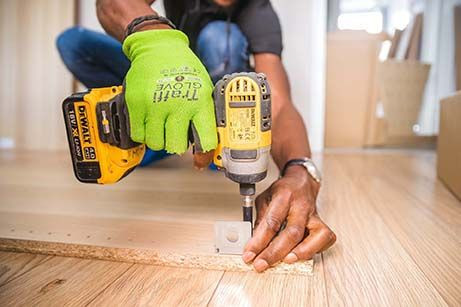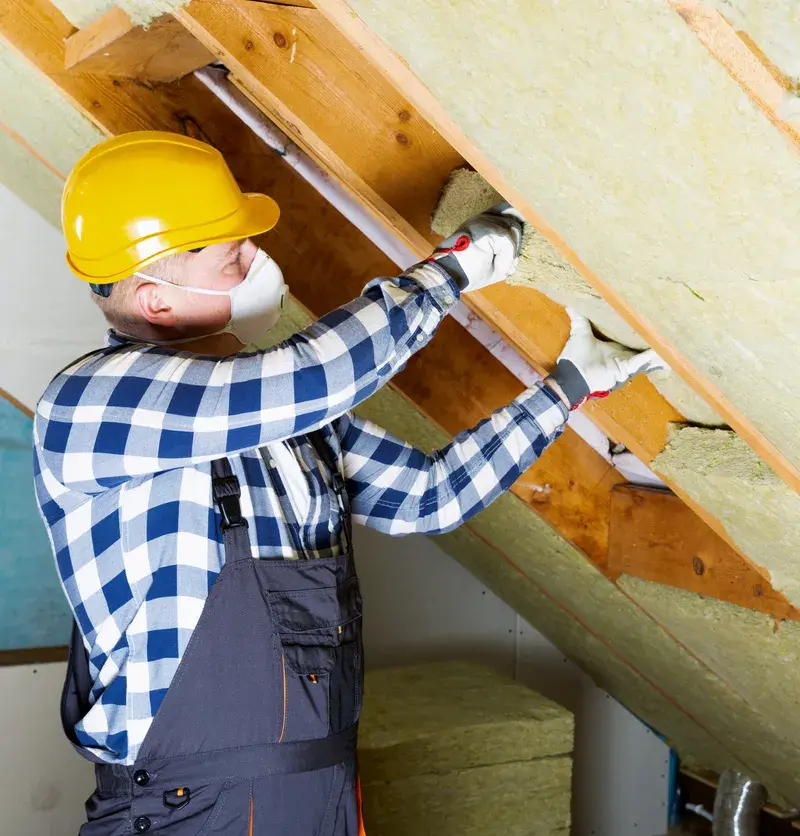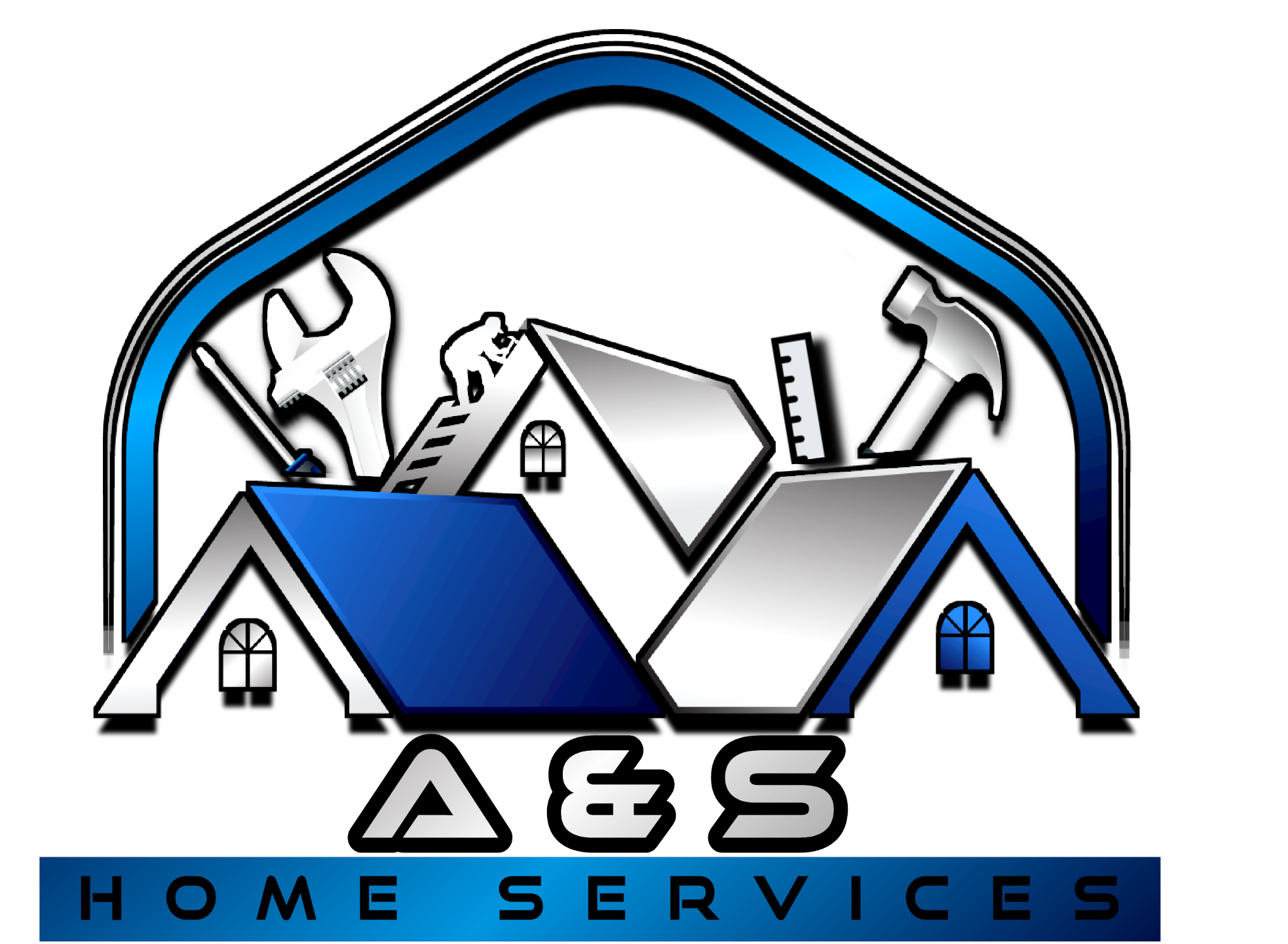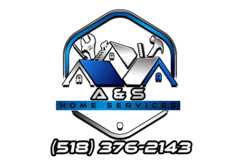Handyman Troy NY Services You Trust: DIY Tips and Expert Help

Summary
- Learn simple DIY skills that save money and stress.
- See when a pro protects your home and your wallet.
- Use clear checklists, tables, and charts for fast decisions.
- Get local insight for handyman Troy NY projects and budgets.
Handyman Troy NY Services You Trust: DIY Tips and Expert Help
Introduction
First-time home ownership feels big. Leaks, flickering lights, and peeling caulk show up fast. You want to fix problems fast and avoid new damage. You also want to know which tasks fit DIY and which need a pro.
Basic DIY skills build confidence. You handle small fixes, keep rooms safe, and stop small problems from growing. You also avoid long waits for simple tasks.
When issues move beyond quick fixes, you want reliable help that understands local building styles and common failure points. Searching for a trusted handyman near me gives you access to pros who handle everyday repairs with safe methods and the right tools. This keeps your home stable, prevents repeat problems, and saves you time on tasks that fall outside basic DIY.
Some jobs risk shock, flood, or structural damage. Skilled support protects your wiring, plumbing, and finishes. For local help and fair guidance, see A&S Home Services.

Why Learning Basic DIY Skills Matters
Simple skills lower costs and stress. They also help you spot risks early. In Troy, older homes and new builds sit side by side. Both need steady upkeep through winter freezes and humid summers.
- Faster fixes. Stop leaks and drips before floors swell.
- Lower costs. Avoid weekend emergency rates for minor tasks.
- Less damage. Quick patches keep moisture out of walls.
- Safer home. Know where shutoffs and breakers sit and how to use them.
- Stronger resale. Buyers trust a home with clean caulk, tight railings, and working fixtures.
Measured benefits for a typical Troy home over one year:
| Action | DIY Time | Pro Cost Saved | Damage Avoided |
|---|---|---|---|
| Recaulk tub and shower | 1 hour | $120 to $200 | Mold growth and tile damage |
| Replace HVAC filter | 10 minutes | $80 to $150 | High energy use and coil grime |
| Patch small drywall hole | 45 minutes | $150 to $250 | Paint failure and draft paths |
10 Essential DIY Skills Every Homeowner Should Learn
1) Find Water Shutoffs and Stop Minor Leaks
Know where the main valve and fixture valves sit. Stop drips and small leaks fast. Protect floors and ceilings.
Steps:
- Locate main shutoff near meter or where the line enters the home.
- Find sink and toilet angle stop valves under fixtures.
- Turn clockwise to close. Hand tighten first. Use a wrench if needed.
- Dry the area. Use plumber tape on threads for small seepage.
Common errors:
- Overtightening valves until they crack.
- Skipping plumber tape on threaded joints.
- Not drying fittings before inspection.
Safe DIY:
- Slow drips from supply lines or traps.
- Loose faucet connection at the base.
Call a pro:
- Main line leak near foundation.
- Wet ceiling below a bathroom.
- Hidden leaks inside walls.
| Item | Tool | Time |
|---|---|---|
| Angle stop tighten | Adjustable wrench | 5 minutes |
| Thread seal | Plumber tape | 3 minutes |
2) Reset Breakers and Replace Outlets or Switches
Power trips happen. Know your panel. Replace a worn switch or outlet safely.
Steps for a switch or outlet:
- Turn off breaker. Test with a contactless tester.
- Remove cover plate and device screws.
- Match wire placement to the old device. Tighten screws.
- Install cover plate. Restore power. Test.
Common errors:
- Relying on a guess for power off.
- Loose back-stab connections.
- Using the wrong amperage rating.
Safe DIY:
- Replace a single switch or standard outlet on a known circuit.
Call a pro:
- Scorched wires or melted insulation.
- Breaker trips after replacement.
- Aluminum branch wiring or multi-wire branch circuits.
| Part | Rating | Typical Cost |
|---|---|---|
| Outlet | 15A or 20A | $2 to $6 |
| GFCI outlet | 20A | $15 to $25 |
| Switch | Single pole | $3 to $8 |
3) Patch Small Drywall Holes
Small holes from anchors or dents look rough. A quick patch smooths walls for paint.
Steps:
- Sand edges. Wipe dust.
- Apply patch or mesh. Spread joint compound thin.
- Let dry. Sand smooth. Repeat thin coat if needed.
- Prime. Paint.
Common errors:
- Thick compound that shrinks and cracks.
- No primer before paint.
- No sanding between coats.
Safe DIY:
- Holes up to a golf ball size.
Call a pro:
- Large holes, wet drywall, or sagging ceilings.
- Suspected mold.
| Hole Size | Method | Time |
|---|---|---|
| Pinhole to dime | Spackle only | 15 to 30 minutes |
| Nickel to golf ball | Mesh + compound | 45 to 90 minutes |
4) Caulk Around Tubs, Showers, and Windows
Fresh caulk seals out water and drafts. It looks clean and protects trim.
Steps:
- Remove old bead with a scraper.
- Clean with alcohol. Dry fully.
- Apply a steady bead of silicone or latex-silicone hybrid.
- Tool the bead smooth with a wet finger or tool.
Common errors:
- Applying over wet or dirty joints.
- Using interior-only caulk in a shower.
- Skipping tape for straight lines.
Safe DIY:
- Bath seams, backsplash gaps, window trim lines.
Call a pro:
- Rot under tile or trim.
- Movement cracks that reopen.
| Area | Caulk Type | Cure Time |
|---|---|---|
| Tub and shower | 100% silicone | 24 hours |
| Window trim | Paintable latex-silicone | 2 to 6 hours |
5) Fix a Running Toilet
A running toilet wastes water and money. The fix is simple and fast in most cases.
Steps:
- Shut the supply valve under the tank.
- Remove lid. Inspect flapper, chain, and fill valve.
- Replace flapper or adjust chain length.
- Open valve. Test flushes.
Common errors:
- Chain too short or too long.
- Installing a flapper of the wrong size.
- Overtightening plastic nuts.
Safe DIY:
- Flapper and fill valve replacement.
Call a pro:
- Cracked tank or bowl.
- Leaking supply line at the wall.
| Part | Typical Cost | Time |
|---|---|---|
| Flapper | $6 to $12 | 10 minutes |
| Fill valve | $12 to $25 | 20 minutes |
6) Unclog Drains Safely
Stop slow drains before backups. Use simple tools and safe methods.
Steps:
- Remove stopper or trap. Clear hair or sludge.
- Use a hand auger for deeper clogs.
- Rinse with hot water. Reassemble traps with new washers.
Common errors:
- Harsh chemicals that damage seals.
- Cross-threading trap nuts.
- Forcing auger and scratching pipes.
Safe DIY:
- Bathroom sink, tub, or shower drains with hair buildup.
Call a pro:
- Main drain backup or sewage smell.
- Frequent clogs after recent work.
| Drain | Tool | Time |
|---|---|---|
| Bathroom sink | Zip tool | 5 to 10 minutes |
| Tub or shower | Hand auger | 15 to 25 minutes |
7) Install a Light Fixture
A new fixture updates a room fast. Follow safety steps and secure all connections.
Steps:
- Turn off breaker. Test for no power.
- Remove old fixture. Support new fixture while wiring.
- Match wires: black to black, white to white, ground to ground.
- Secure to box rated for the fixture weight.
Common errors:
- No box support for heavy fixtures.
- Loose wirenut connections.
- Missing ground wire connection.
Safe DIY:
- Standard ceiling or wall fixture under 15 pounds.
Call a pro:
- Heavy chandeliers.
- No ground in the box.
- Old cloth wiring or brittle insulation.
| Fixture Type | Time | Notes |
|---|---|---|
| Flush mount | 30 to 45 minutes | Simple swap |
| Pendant | 45 to 60 minutes | Adjust chain length |
8) Weatherstrip Doors and Windows
Stop drafts and lower bills. Troy winters test gaps around doors and sashes.
Steps:
- Inspect daylight around frames.
- Measure and cut weatherstrip or door sweep.
- Clean surface. Install adhesive strips or screw-on sweeps.
Common errors:
- Using foam too thin for a large gap.
- Installing on dirty surfaces.
- Blocking door close with thick sweep.
Safe DIY:
- Peel-and-stick weatherstrip and sweeps.
Call a pro:
- Rotten frames or sagging hinges.
- Historic sash windows with lead paint risk.
| Gap Size | Product | Rough Cost |
|---|---|---|
| Small | Foam tape | $5 to $12 |
| Medium | Rubber or vinyl | $10 to $20 |
| Under-door | Door sweep | $10 to $25 |
9) Assemble and Anchor Shelving
Strong storage keeps rooms tidy and safer. Anchoring prevents tip-over injuries.
Steps:
- Lay out parts. Sort hardware.
- Assemble on a soft surface.
- Locate studs. Use anchors rated for the load.
- Secure to studs or masonry with correct fasteners.
Common errors:
- Using drywall anchors for heavy loads.
- Skipping torque checks on bolts.
- Mounting off-level.
Safe DIY:
- Flat-pack shelves and small wall shelves.
Call a pro:
- Floating shelves on plaster or tile.
- Built-ins or heavy media cabinets.
| Wall Type | Anchor | Load Range |
|---|---|---|
| Drywall + stud | Wood screw | 50 to 100 lb per stud |
| Drywall no stud | Toggles | 20 to 50 lb |
| Masonry | Tapcon | 50 to 200 lb |
10) HVAC Filter Changes and Thermostat Basics
Clean filters protect equipment and lower energy use. Thermostat knowledge saves money.
Steps:
- Check filter size and MERV rating on the frame.
- Replace every 1 to 3 months based on dust and pets.
- Program thermostat schedules for day and night.
Common errors:
- Wrong filter size that leaks air around edges.
- MERV too high for older blowers.
- No schedule programming.
Safe DIY:
- Filter swaps and thermostat schedule edits.
Call a pro:
- No airflow after filter change.
- Short cycling or frozen coil.
| Filter Type | MERV | Replace Cycle |
|---|---|---|
| Fiberglass | 4 | Monthly |
| Pleated | 8 to 11 | 1 to 3 months |
When DIY Creates Problems
Some mistakes lead to high repair bills. Others risk shock, floods, or mold. Use the table to spot risk levels before starting.
| Task | Risk if done wrong | Warning Sign | Next Step |
|---|---|---|---|
| Outlet swap | Shock or fire | Heat on cover or burning smell | Cut power and call a pro |
| P-trap reinstall | Leaks and mold | Drips or sewer odor | Rebuild with new washers or hire help |
| Tub caulk | Water behind tile | Soft grout or stained ceiling | Open area and dry, then recaulking plan |
| Shelf anchor | Collapse and injury | Loose screws or sagging shelf | Re-anchor into studs |

Cost and Value Comparison of DIY and Professional Work
Look at time, tools, quality, and long-term value. A mix of DIY and pro work serves most Troy homes well.
Typical Local Cost Ranges
| Service | DIY Cost | Pro Cost in Troy NY | Notes |
|---|---|---|---|
| Small drywall patch | $15 to $40 | $150 to $300 | Finish quality matters for paint |
| Faucet swap | $75 to $150 | $180 to $350 | Risk of leaks under sink |
| Light fixture swap | $30 to $120 | $150 to $300 | Check box rating |
| Toilet rebuild | $15 to $40 | $120 to $220 | Flapper and fill valve |
| Door weatherstrip | $10 to $30 | $90 to $180 | Fast DIY save |
Time vs Money
- If a job takes under an hour with low risk, DIY often wins.
- If a job risks shock, flood, or code issues, hire help.
- If tools are rare or pricey, pro service often costs less overall.
Tool Cost Overview
| Tool | Use | Cost | Value |
|---|---|---|---|
| Adjustable wrench | Plumbing, bolts | $10 to $25 | High |
| Stud finder | Shelf anchoring | $15 to $40 | High |
| Contactless tester | Electrical safety | $15 to $30 | High |
| Caulk gun | Sealing | $7 to $20 | High |
| Hand auger | Drain clearing | $20 to $35 | Medium |
| Orbital sander | Surface prep | $40 to $80 | Medium |
Warranty Value
- Pro labor often includes 1 year coverage on workmanship.
- DIY saves upfront but leaves you with redo labor if issues return.
- For hidden issues, pro testing and warranty lower risk.
Resale Value Impact
- Crisp caulk lines and tight hardware boost showing appeal.
- Electrical and plumbing permits and invoices support buyer trust.
- Documented maintenance schedules help appraisal review.
Seasonal Demand Trend in Troy
Winter storms and spring rains drive service calls. Prices move with demand.
Handyman calls by season (index 100 = yearly average) Winter: 115 ####### Spring: 110 ###### Summer: 95 ##### Fall: 105 ######
How Handyman Troy NY Services Help First-Time Homeowners
Local homes range from historic row houses to new townhomes. A skilled team knows old plaster, knob-and-tube relics, and modern systems.
For fast local support, start with handyman troy ny.
- Safety. Pros test circuits, venting, and gas risks.
- Accuracy. Level, plumb, and square install methods hold up.
- Speed. One visit solves a list of small tasks.
- Better tools. Right bits, anchors, and testers protect finishes.
- Code compliance. Work aligns with local rules and permits where needed.
When To DIY and When To Hire Help
Use this checklist before each job.
- Is power or gas involved
- Will water flow if a seal fails
- Is work hidden behind walls or ceilings
- Do you own the tools and basic skills
- Will a permit or inspection be required
- What is the cost of failure at 2 a.m.
Decision Flow Chart
Start | |-- Simple, low risk, under 1 hour? -- Yes --> DIY | No |-- Power, gas, or main water line? -- Yes --> Hire pro | No |-- Hidden or structural work? ----- Yes --> Hire pro | No |-- Tool cost exceeds pro visit? --- Yes --> Hire pro | No --> DIY with care
See clear warning signs for wall damage here: 7 signs you need professional drywall repair.
Long-Term Maintenance and Resale Value
Steady upkeep protects structure and finishes. A plan avoids urgent calls and keeps value strong. Buyers in Troy look for dry basements, tight windows, and smooth walls.
Maintenance Timeline
| Interval | Task | Impact |
|---|---|---|
| Monthly | HVAC filter check | Lower energy use |
| Quarterly | Test GFCI and smoke alarms | Safety |
| Spring | Gutter cleaning and downspout check | Prevent water entry |
| Summer | Exterior caulk inspection | Stop drafts and leaks |
| Fall | Weatherstrip doors and windows | Winter comfort |
| Winter | Check attic for frost and leaks | Mold prevention |
| Yearly | Plumbing and electrical walk-through | Find early risks |
Energy and Comfort
Old homes in the Capital Region respond well to air sealing and careful upgrades. See ideas for historic homes here: energy updates for historic Albany homes.
Where a Pro Adds Lasting Value
- Bathroom moisture control with fans and sealed surrounds.
- Waterproofing at foundation lines and window wells.
- Panel upgrades for modern loads and EV charging.
For multi-trade punch lists and time-saving visits, reach out to handyman troy ny.
5-Year Upkeep Trend Snapshot
Avg annual upkeep spend for small Troy homes 2019: $1,800 ####### 2020: $1,950 ######## 2021: $2,050 ######## 2022: $2,150 ######### 2023: $2,200 #########
FAQs for First-Time Homeowners
How often should I replace HVAC filters
Every 1 to 3 months. Dust and pets move you toward monthly.
What basic tools should my kit include
Adjustable wrench, stud finder, contactless tester, screwdriver set, hammer, tape measure, caulk gun, utility knife, and a small level.
When does a small leak need a pro
If you see stains on ceilings, smell mildew, or hear water inside a wall. Stop water at the valve and call for help.
Are GFCI outlets required in bathrooms and kitchens
Yes, for safety near water. If you lack GFCI protection, plan an upgrade.
How do I know a shelf install is safe
Fasteners in studs or anchors rated for the load. No wobble. No cracking. If heavy, mount into studs only.
What do I prepare before a service visit
Clear access to panels, sinks, and work areas. List issues by room. Note brands and model numbers.
Conclusion
Strong DIY skills handle routine tasks and build confidence. You save time and protect your home. Skilled help steps in for risk, speed, or complex jobs. Keep a basic tool kit, follow checklists, and call for backup when stakes run high.
For local support with clear pricing and dependable results, contact A&S Home Services.

